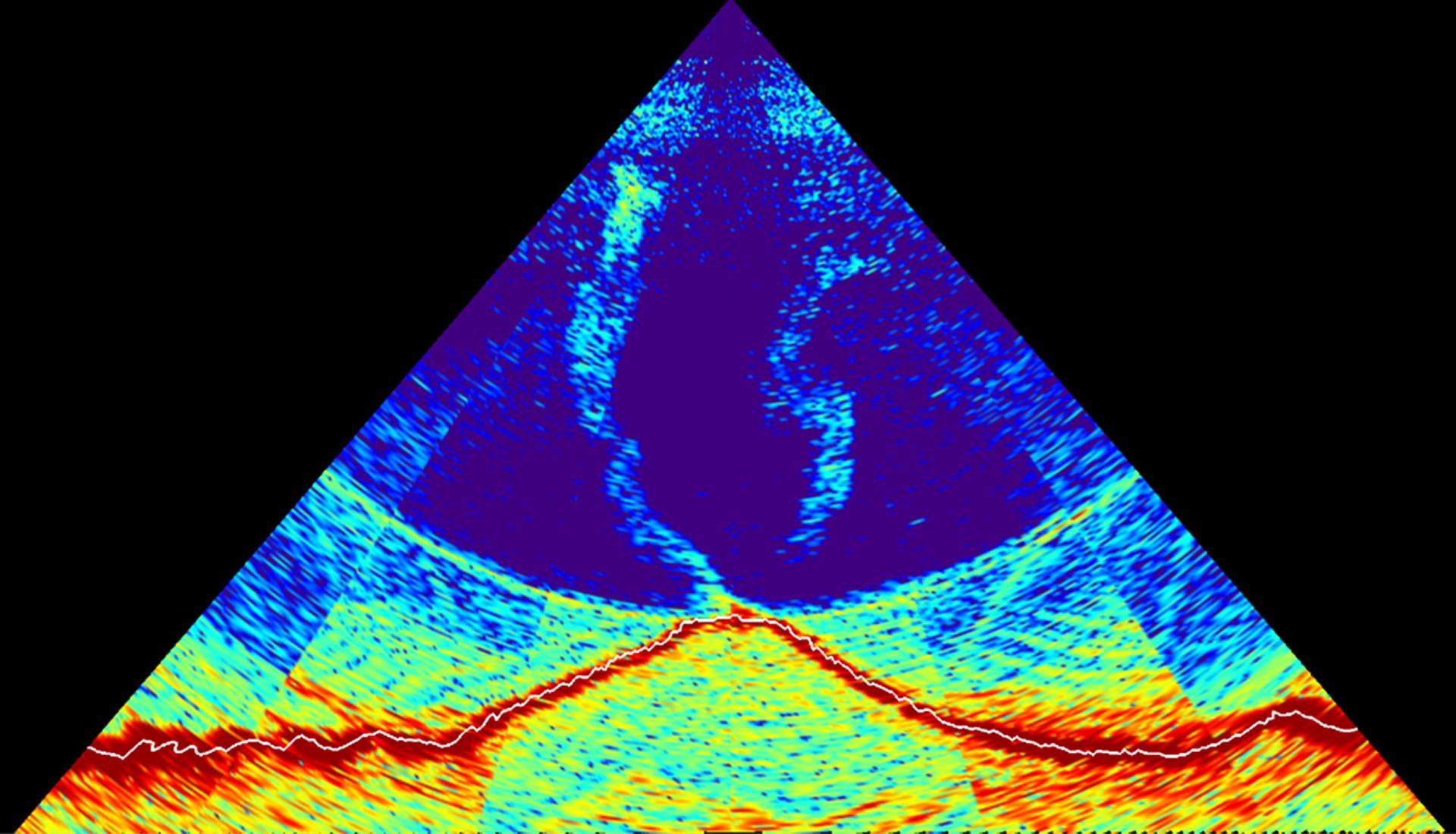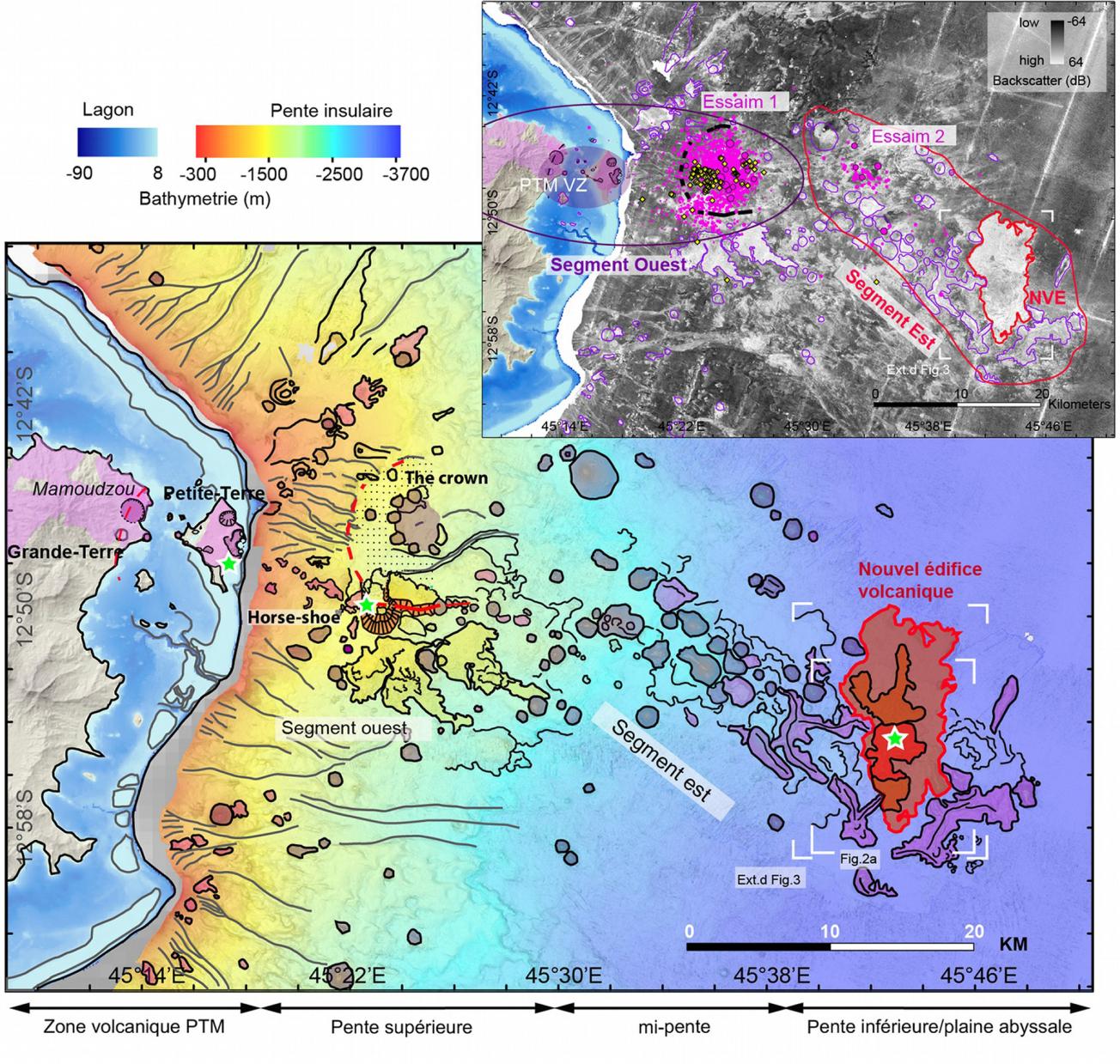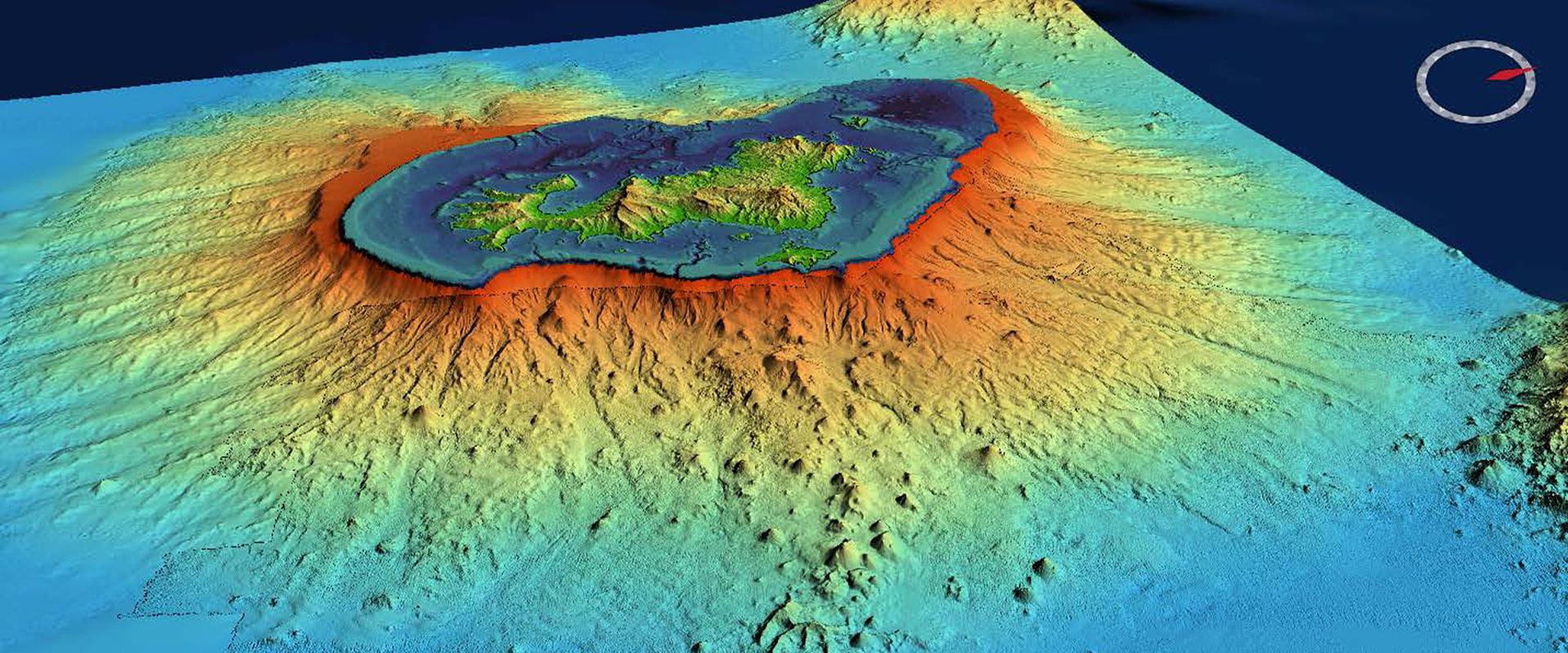By analysing the multidisciplinary data from the MAYOBS1 campaign conducted off Mayotte following the earthquakes that have been taking place there since 2018, a team of scientists from IPGP, Ifremer, CNRS and BRGM revealed an unusual submarine eruption, fuelled by a very deep magmatic system that had developed in connection with active regional tectonics.
The article on the study, which was led by scientists from IPGP, Ifremer, CNRS and BRGM, was published in the journal Nature Geoscience on 26 August 2021 and presents the analysis and interpretation of geophysical and geochemical data acquired as part of the state-funded SISMAYOTTE research programme. The programme aimed to understand the origin of the seismic crisis that began off the island of Mayotte in May 2018. Its main component was the MAYOBS1 mission at sea, which took place in May 2019 aboard the Marion Dufresne, a vessel of the French Oceanographic Fleet operated by Ifremer. The mission aimed to recover and redeploy six observation bottom seismometers (OBS) that had been installed 3 months earlier and to acquire data on the relief and nature of the seabed (using in particular a multi-beam echo sounder and a sediment echo sounder) in search of possible traces of volcanic activity. This campaign led to the discovery of a new active volcanic edifice, at a depth of 3,300 m and about 50 km off the coast of Mayotte in May 2019.
One of the largest volumes of lava in recent centuries
The analysis of all the seismological, bathymetric, geodetic and geochemical data collected by the programme revealed a complex volcanic system, with no known analogous example, rooted very deeply under the lithosphere, remobilising ancient and newly-formed regional tectonic structures to emit one of the largest volumes of lava on the ocean floor in recent centuries.
By comparing bathymetric data acquired by the French Navy’s Hydrographic and Oceanographic Service (SHOM) in 2014 with that produced by MAYOBS1, scientists have estimated that more than 5 km3 of lava had been deposited to form the new volcano. This eruption is by far the largest underwater eruption ever documented. It is comparable to the eruptions observed at the planet's main hotspots, such as Hawaii or Iceland, although it is not in the same geodynamic context. The presence of an acoustic plume and geochemical anomalies in the water column above the edifice confirmed that the eruption was underway at the top of the volcano when the scientists arrived on the scene.

Key figures
-
3300.00min depth
-
50.00kmoff Mayotte
-
5.00km3of lava to form the new volcano
The deepest caldera structure ever documented
This new edifice is located at the end of a volcanic rift (called the Mayotte rift by the study) that extends east of the island of Mayotte over a distance of about 50 km. This rift is composed of very well preserved volcanic domes and lava flows that were probably formed during the Quaternary period (the geological period between 2.5 million years ago and today). The thousands of years old terrestrial volcanic edifices on the island of Petite-Terre in Mayotte are part of this, and some of the structures are reminiscent of an ancient submarine caldera, 8 km in diameter, between 5 and 10 km east of the Petite-Terre coast.
The seismicity study, recorded by the network of onshore and offshore seismometers, and precisely relocated using OBSs, together with the analysis of land and seabed geodesy data, enabled the authors of the study to propose a model of magmatic storage and drainage related to the eruption. The earthquakes have been much deeper than usual in a volcanic context and occur below the boundary between the crust and the mantle (or Moho). They point to the existence of very deep reservoirs and drainage systems spread throughout the lithosphere, which had never before been clearly observed in volcanology.
Geodetic data show the subsidence and eastward displacement of the island of Mayotte at exceptional rates. Models indicate that these deformations are related to the emptying of one or more very deep magma reservoirs in the Earth's mantle. The study suggests that the main reservoir is located near the island of Petite-Terre, under the old caldera. If so, this caldera structure would be the deepest ever documented (55 km). The magma is assumed to have been drained from this main reservoir by a vein (or dyke) to a second, more superficial reservoir and then to the surface along the Mayotte volcanic rift.

Location of the new volcanic edifice and earthquake swarms within the volcanic-tectonic structures described in the publication.
© Feuillet et al., Nature Geoscience
This volcanic rift is a volcanic-tectonic structure similar to other rifts documented in the Comoros archipelago. These volcanic-tectonic structures are either newly-formed or due to the reactivation of old transform faults dating from the opening of the Mozambique Channel. They are organised in echelons along the Comoros archipelago to accommodate active tectonic deformations in a transfer zone between the submarine part of the East African rift and the Malagasy rifts. Between these echelon structures, it is assumed that damage zones would be privileged sites for magma storage and the formation of large magma reservoirs. Volcanic activity in Mayotte, as in many other parts of the world, is therefore controlled by regional tectonics.
Since the MAYOBS1 campaign and the creation of the Mayotte Volcanological and Seismological Monitoring Network, REVOSIMA (Réseau de surveillance volcanologique et sismologique de Mayotte), many other campaigns at sea have been undertaken in the area to monitor the eruption, seismicity and associated deformation. These campaigns continue to provide valuable data for monitoring and improving our understanding of this complex and novel volcanic-tectonic system.
Publication
Feuillet, N., Jorry, S., Crawford, W.C. et al. Birth of a large volcanic edifice offshore Mayotte via lithosphere-scale dyke intrusion. Nat. Geosci. (2021). https://doi.org/10.1038/s41561-021-00809-x







